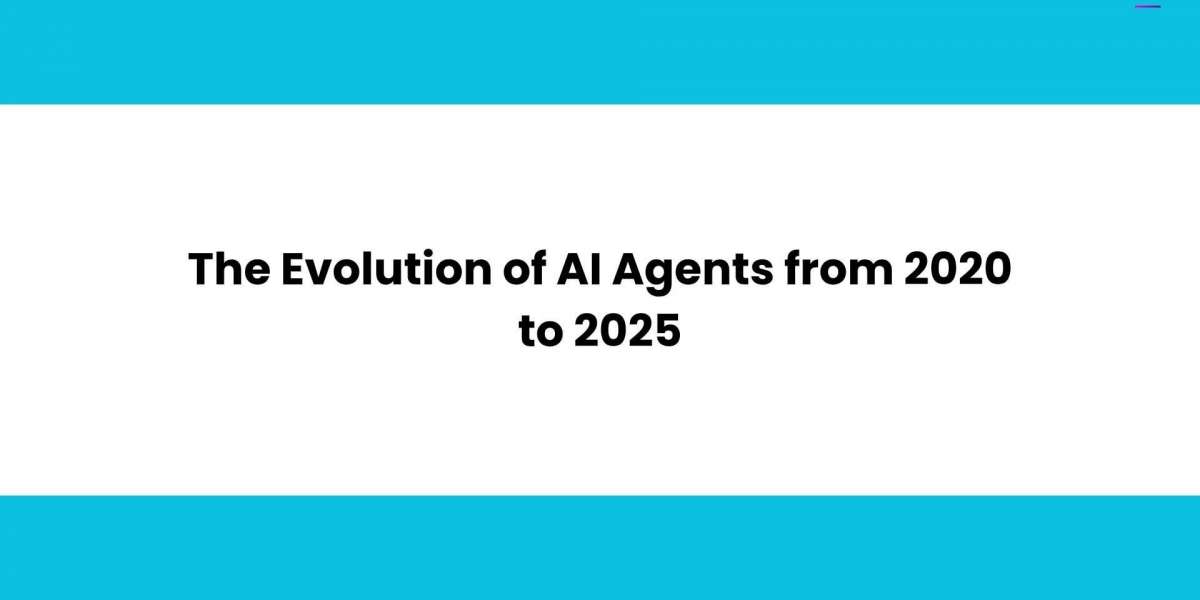Over the past five years, the role of artificial intelligence in our everyday lives has grown exponentially. One of the most remarkable advancements has been in the field of AI agents—software entities that can perceive, reason, and act autonomously. From basic chatbots to intelligent design assistants, AI agents have matured rapidly, transforming industries across the board.
A leading example is XTEN-AV, which has leveraged the power of AI agents to automate AV system design, documentation, and collaboration. What was once a manual, time-consuming process is now faster, smarter, and more scalable thanks to AI-driven workflows. This mirrors a broader trend across multiple sectors, where AI agents are taking center stage in boosting productivity, personalizing user experiences, and optimizing operations.
In this blog, we take a look at how AI agents have evolved from 2020 to 2025—highlighting key milestones, innovations, and real-world use cases that define the AI landscape today.
The State of AI Agents in 2020
In 2020, AI agents were mostly rule-based or reactive. Their intelligence was limited to predefined scenarios and scripted interactions. You would find them:
Answering FAQs through basic chatbots
Handling simple voice commands via smart assistants
Automating repetitive tasks in customer service
Recommending products on e-commerce platforms
While these early agents were useful, they lacked real understanding, contextual awareness, and adaptability. Their actions were confined to what they were explicitly programmed to do. They could not learn, reason, or improve meaningfully over time.
In platforms like XTEN-AV, early AI applications were limited to data entry automation or template-based diagram suggestions. The full potential of AI was still waiting to be unlocked.
2021–2022: From Automation to Intelligence
The years following 2020 saw major breakthroughs in machine learning and natural language processing. AI agents started evolving from static bots to more dynamic, learning-based systems. The release of advanced language models and cloud-based AI services empowered developers to build agents that could:
Understand and respond in natural language
Learn from user interactions
Handle more complex workflows
Begin offering contextual assistance
During this phase, XTEN-AV began enhancing its platform with smarter design assistants. The Ai Agent could analyze room layouts, auto-suggest device placements, and dynamically generate wiring schematics—all based on user preferences and project parameters.
At the same time, other industries began deploying AI agents for:
Email triage and calendar management
Document summarization
Social media monitoring
Basic diagnostics in healthcare and IT support
This marked a turning point—AI agents were no longer just tools, they were becoming collaborators.
2023: The Rise of Multi-Modal and Proactive Agents
By 2023, AI agents became more proactive and capable of working across different data formats—text, images, voice, and even video. These multi-modal capabilities allowed AI to operate more naturally in human workflows.
Key developments included:
AI agents that could read visual data and generate actionable insights
Voice-controlled assistants integrated with enterprise tools
Agents that predicted user needs before being prompted
Real-time collaboration assistants in design, engineering, and customer support
XTEN-AV embraced this wave by adding AI agents that could interpret signal flow, detect design conflicts, and guide users through complex AV configurations without needing manual corrections. This helped AV teams work more efficiently across geographies and time zones.
Elsewhere, companies like Microsoft, Google, and Salesforce introduced AI agents that supported employees across departments—from marketing to HR—recommending actions, auto-filling reports, and enabling seamless task handoffs.
2024: Agents with Memory, Reasoning, and Personalization
In 2024, AI agents began to demonstrate long-term memory, advanced reasoning, and personalized behavior. Rather than treating every interaction in isolation, they began adapting to user habits, goals, and project history.
Features that became common:
Persistent memory of preferences and prior conversations
Multi-step reasoning to solve more complex problems
Tailored experiences based on user role or behavior
Integration with broader enterprise systems (CRMs, ERPs, design tools)
At XTEN-AV, the Ai Agent could now remember previous projects, suggest design templates based on user history, and even flag inconsistencies across multi-project environments. For AV integrators, this meant fewer errors, faster design cycles, and a smoother handoff to engineering teams.
Across industries, AI agents were beginning to function like digital coworkers—ones that could anticipate needs, understand context, and execute with precision.
2025: Collaborative, Autonomous, and Cross-Platform Agents
In 2025, AI agents are not just assistants—they are teammates. The latest generation of agents can collaborate with humans, other agents, and multiple platforms at once. They can initiate tasks, ask clarifying questions, and even make autonomous decisions within predefined boundaries.
Key characteristics of today’s AI agents:
Ability to work across apps (email, task managers, design software) seamlessly
Autonomous decision-making with feedback loops
Collaboration with multiple team members simultaneously
Continuous learning from team interactions and project outcomes
XTEN-AV now uses its Ai Agent to manage AV projects end to end—automating system design, generating wiring schematics, updating documentation in real-time, and integrating with project management tools for seamless execution. It no longer just assists—it leads parts of the workflow.
In other sectors, AI agents manage logistics, generate code, monitor patient vitals, create financial forecasts, and provide on-demand training. They are also being used in education, creative industries, and smart homes, making AI a truly ubiquitous force.
The Impact on Productivity and Innovation
The evolution of AI agents has brought profound benefits:
Faster workflows: What used to take hours now takes minutes.
Fewer errors: AI validation reduces costly mistakes.
Improved collaboration: Teams can work asynchronously with intelligent agents keeping projects aligned.
Greater accessibility: AI agents enable non-experts to handle complex tasks with guided support.
For companies like XTEN-AV, this has meant delivering AV design faster, at scale, and with fewer resources. In other words, AI agents are leveling the playing field for organizations of all sizes.
Looking Ahead: What Comes Next?
The next frontier for AI agents may include:
Emotional intelligence and empathy for better human interaction
Full cross-domain collaboration (e.g., a single agent managing AV design, marketing, and customer support)
Open agent ecosystems where third-party developers can train and deploy specialized agents
Regulatory frameworks and ethical guidelines to ensure responsible use
As AI agents continue to evolve, they will become indispensable in every aspect of business and daily life.
Conclusion
From 2020’s simple chatbots to 2025’s autonomous collaborators, the journey of the Ai Agent has been nothing short of revolutionary. What started as a tool for automating routine tasks has grown into a strategic asset for innovation, speed, and scalability.
Platforms like XTEN-AV exemplify this transformation, using AI agents not only to assist but to lead key workflows in AV system design. As we look forward, the question is no longer whether AI agents will shape the future—but how quickly businesses can adapt to unlock their full potential.
Read more: https://ivebo.co.uk/read-blog/144597








